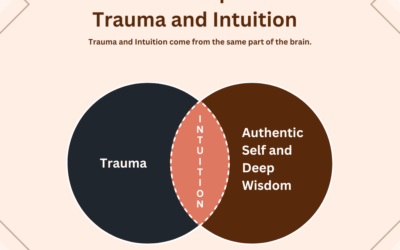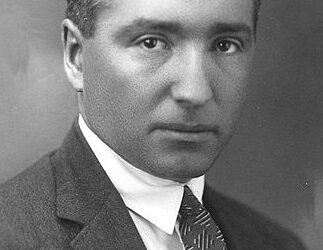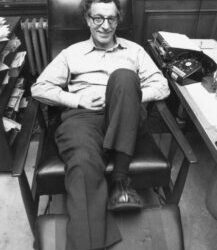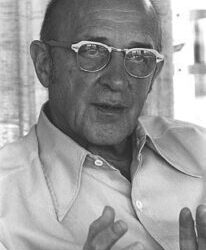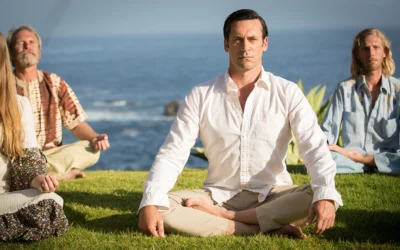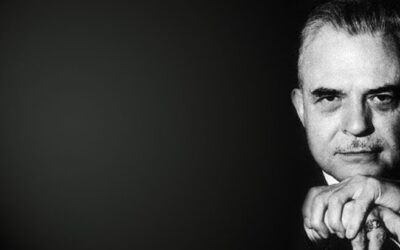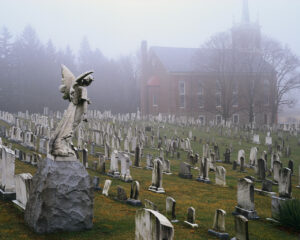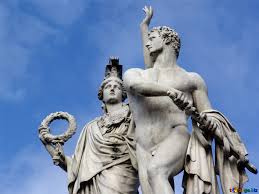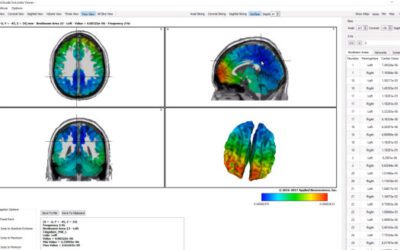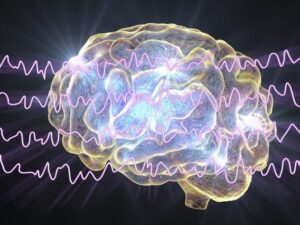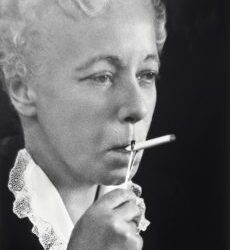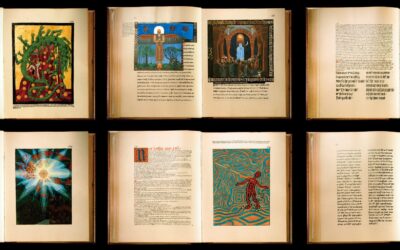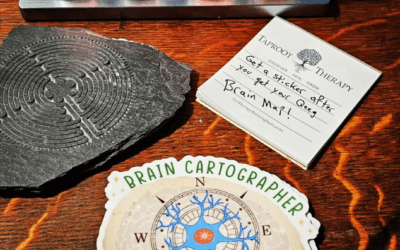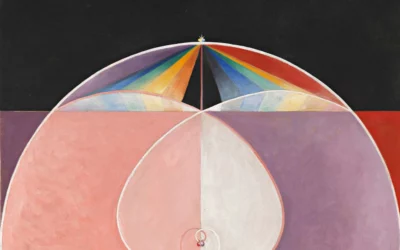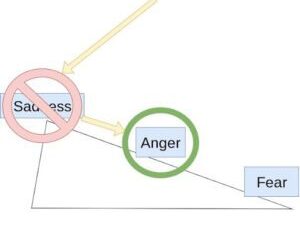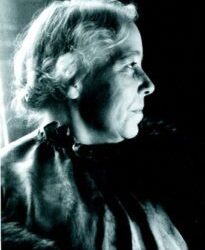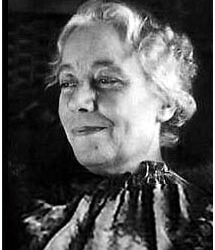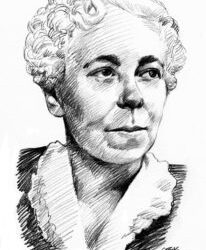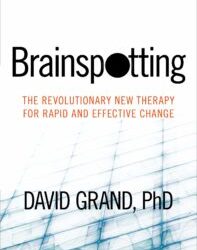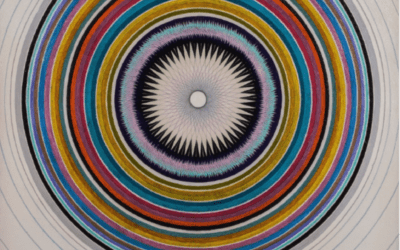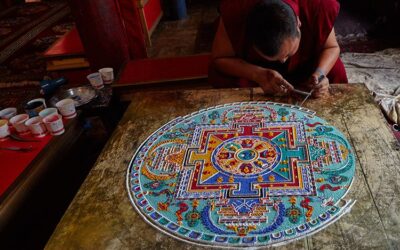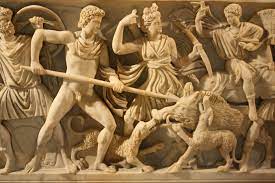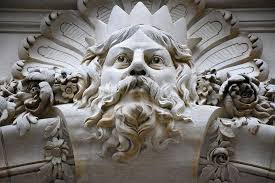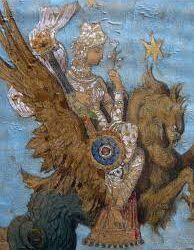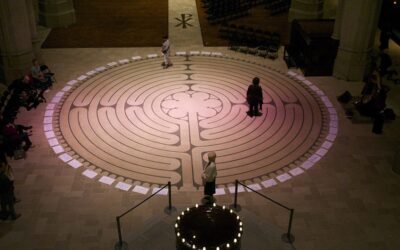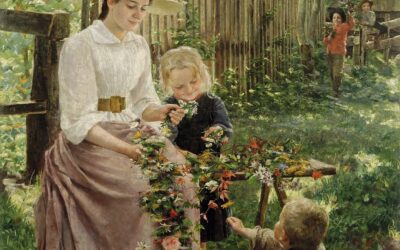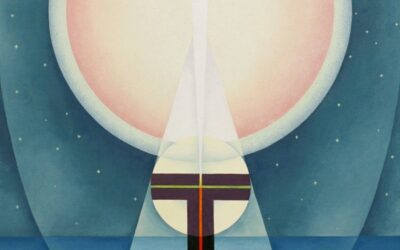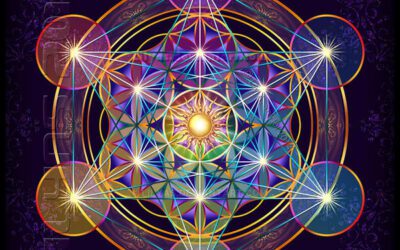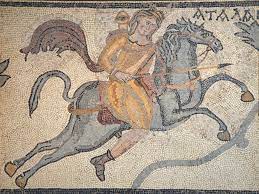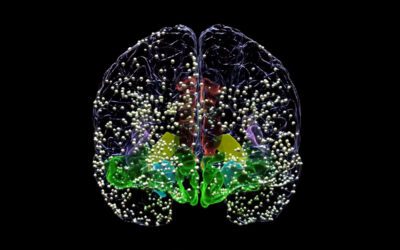Rethinking Money, Gold, and Value: A Thought Experiment on Alternative Economic Systems What do we truly value as a society? This profound question strikes at the heart of how we structure our communities, economies, and ways of life. In this thought-provoking...
a
Welcome to the Taproot Therapy Collective Blog, your deep‑dive space into trauma‑informed therapy, depth psychology, and the cultural forces shaping mental health today. Authored by our licensed clinicians in Birmingham, Alabama, our posts span from Jungian insights and somatic healing to evidence‑based modalities like EMDR and neuromodulation, as well as explorations of micro‑nutrition and media psychology. Each article aims to illuminate how psyche, body, and society intertwine—whether we’re unpacking the weaponization of collective trauma in our digital era or investigating how somatic trauma mapping helps track pain that lives inside the body.
Our blog extends beyond Birmingham’s office walls, offering trusted guides on practices like dream analysis through a Jungian lens and methods for shadow work and intergenerational healing. We also highlight local pulse by sharing resources for therapists and mental health seekers in Alabama, from expressive‑arts workshops to CEU‑accredited community trainings. Designed for both mental health professionals and curious individuals, our writing bridges clinical depth with cultural relevance—engaging with everything from architecture’s psychological impact and mythology’s role in identity to design, film, ritual, and the intricate psychology underpinning conspiracy and belief systems.
If you seek a mental health conversation that honors both the interior journey and the social context we inhabit, explore our categorized sections—such as Neuroscience and the Brain, Mythology and Therapy, and Psychology of Media and Culture—to find articles that resonate. Join us as we map the roots of psychic distress while cultivating possibilities for growth, resilience, and meaningful connection.
Search the Blog by Category
The Relationship between Intuition and Trauma
The Relationship between Intuition and Trauma Did you enjoy this article? Checkout the podcast here: https://gettherapybirmingham.podbean.com/ Many artists that have spoken to describe their process as "tuning into a radio wave". One artist told me that she did...
Icky, Mean, Hateful: On the nature of evil in psychotherapy
One of the things that happens frequently in family therapy is that a person or group of family members will accuse the other person or group of family therapy of being mean or hateful. Most of the time if someone is abusive or intentionally hurtful they won't deny...
The Curious Case of Wilhelm Reich
Who was Wilhelm Reich? Wilhelm Reich, a controversial figure cloaked in enigmatic complexity and untamed paradoxes, defied easy categorization throughout his extraordinary life. Born on March 24, 1897, in the mystical realm of Galicia, Reich embarked on a career...
Who was Albert Ellis?
Albert Ellis Did you enjoy this article? Checkout the podcast here: https://gettherapybirmingham.podbean.com/ Albert Ellis (1913-2007) was an influential American psychologist and the founder of Rational Emotive Behavior Therapy (REBT). His impact on the profession of...
Who was Carl Rogers? What is Rogerian Therapy
Carl Rogers Did you enjoy this article? Checkout the podcast here: https://gettherapybirmingham.podbean.com/ In a remarkable response to the dominant therapeutic models of his era, such as psychoanalysis and behaviorism, Carl Rogers revolutionized the field with his...
The Humanism of Virginia Satir
The final chapter of the acclaimed television series "Mad Men" takes place at the Esalen Institute in Big Sur, California. Seeking solace and meaning, the protagonist Don Draper and other characters from the show find themselves at Esalen, a renowned retreat known for...
Milton Erickson and Ericksonian Hypnosis
Did you enjoy this article? Checkout the podcast here: https://gettherapybirmingham.podbean.com/ Milton Erickson's Biography: Milton H. Erickson, born on December 5, 1901, in Aurum, Nevada, overcame significant challenges throughout his life and became one of the most...
Fritz Perls Founder of Experiential Therapy
Fritz Perls: Exploring Gestalt Therapy Fritz Perls, an innovative psychotherapist and one of the key figures in the development of Gestalt therapy, made significant contributions to the field of psychology. His innovative approach to therapy, grounded in the concept...
Alfred Adler’s Contributions to Psychotherapy
Individual Psychology Alfred Adler, a renowned psychologist and a founding figure of individual psychology, had a significant realization during a childhood experience that shaped his profound insights into psychology. As he remembered running past a graveyard and a...
Plato: The First Depth Psychologist Unraveling the Conflicting Drives of Human Nature
Who was Plato? The field of depth psychology delves into the exploration of the unconscious mind, examining the intricate workings of the human psyche. While modern psychology has made significant strides in...
How Is Experiential and Somatic Therapy Different from Cognitive and Behavioral Therapy
What is Somatic and Experiential Therapy? Experiential therapy modalities, such as Internal Family Systems (IFS), Lifespan Integration (LI), Hakomi, AEDP, Psychodrama, and Gestalt therapy, are often considered "non-manualizable" approaches to therapy. This means that...
How Can Supplements Help Gut Health and Mental Health?
Did you enjoy this article? Checkout the podcast here: https://gettherapybirmingham.podbean.com/ Maintaining a healthy gut microbiome is crucial for overall health and wellbeing. Recent studies have shown that there is a strong connection between gut health and mental...
What is the Difference in QEEG Brain Mapping, Trans Cranial Magnetic Stimulation (TCMS), Neurofeedback (MCNF), Neurostimulation, and Biofeedback?
Decoding Neuromodulation: QEEG, Neurofeedback, and Neurostimulation Explained The world of **neuromodulation**—therapies that use technology to change nervous system activity—can be confusing. You may wonder how these advanced modalities differ, what their history is,...
Peak Neuroscience is now offering neurostimulation and q-EEG brain mapping at Taproot Therapy!
We are excited to announce we will be offering qEEG Brain Mapping and Neurostimulation with Peak Neuroccience! You can register for a special rate on the first 10 sessions if get on the waitlist before they open. You can read more about brain mapping and q-EEG below....
The Body Keeps the Score 2? ; The Path Forward for Trauma Treatment
What if Bessel van der Kolk wrote a sequel to his influential book on trauma today? Did you enjoy this article? Checkout the podcast here: https://gettherapybirmingham.podbean.com/ e If anyone is familiar with the book The Body Keeps the Score, by world renowned...
Corporate Tech Monopolies are Going to Ruin Therapy
Last weekend BetterHelp, the online subscription therapy company, settled with the FTC for almost 8 million in fines for selling therapy patient's confidential information to Facebook and Snapchat. This isn’t justice, so hold your applause. Did you enjoy this article?...
Karen Horney
Who was the female psychoanalyst and what do her theories say about trauma and personality? Did you enjoy this article? Checkout the podcast here: https://gettherapybirmingham.podbean.com/ Karen Horney was a German psychoanalyst. Her career came into prominence in the...
Book Review of Lament of the Dead: Psychology after Jung’s The Red Book by James Hillman and Sonu Shamdasani
“The years, of which I have spoken to you, when I pursued the inner images, were the most important time of my life. Everything else is to be derived from this. It began at that time, and the later details hardly matter anymore. My entire life consisted in elaborating...
Stellate Ganglion Block for Trauma and PTSD – Interview with Dr. James Lynch
Did you enjoy this article? Checkout the podcast here: https://gettherapybirmingham.podbean.com/ Stellate Ganglion Block (SGB)—a medical procedure that effectively treats symptoms associated with posttraumatic stress disorder (PTSD)—is an injection of local anesthetic...
Interview with A. Savage of the Parquet Courts
A. Savage is a brilliant visual and musical artist. As front man of the Parquet Courts he has seven ground breaking rock albums. As a visual artist he is makes beautiful impressionist work that has echoes of Wassily Kandinsky, playful modernism of Paul Klee and even...
Interview with David Tacey on Carl Jung, Mysticism, and the Politics of Religion
Dr. David Tacey is a professor in literature and depth psychology at La Trobe University, Melbourne. He is the author of eight books, including Jung and the New Age (2001), The Spirituality Revolution (2003) and How to Read Jung (2006).He was born in...
What Happens When We Can’t Feel Emotion?
Navigating the Complexities of Emotion: Insights from a Psychotherapist As a psychotherapist, one of the most common challenges I see clients face is understanding and managing their emotions. Emotions play a crucial role in our daily lives, influencing our thoughts,...
How do I become a therapist?
How much does it cost to become a therapist? How do I become a therapist? Becoming a Mental Health Practitioner in Alabama: Requirements, Costs, and Pathways Key Points and Summary: This is the most common question that we get. Don't worry we have an answer for you!...
Karen Horney Article 4/4
Karen Horney Moving Away From People Karen Horney was a German psychoanalyst. Her career came into prominence in the nineteen twenties when she formed theories on human attachment and neurosis that split from Freud’s key ideas. Horney’s theory of personality...
Karen Horney Part 3/4
Karen Horney Moving Against People Karen Horney was a German psychoanalyst. Her career came into prominence in the nineteen twenties when she formed theories on human attachment and neurosis that split from Freud’s key ideas. Horney’s theory of personality development...
Karen Horney Part 2/4
Karen Horney Part 2/4 Moving Towards People Karen Horney was a German psychoanalyst. Her career came into prominence in the nineteen twenties when she formed theories on human attachment and neurosis that split from Freud’s key ideas. Horney’s theory of personality...
Karen Horney Part 1/4
Karen Horney Who was Karen Horney? Karen Horney was a German psychoanalyst. Her career came into prominence in the nineteen twenties when she formed theories on human attachment and neurosis that split from Freud’s key ideas. Horney’s theory of personality development...
Everything you ever wanted to know about Brainspotting
Everything You Ever Wanted to Know about Brainspotting Trauma activates our body’s fight or flight system making us experience strong emotional and physical reactions without a logical cause. This can make you feel angry or scared before you can intellectually...
Mysticism, Spirituality, Therapy
Existentialism vs Mysticism: What is the Ego Self Axis?
In the first session when I give patients my initial observations they often have difficulty hearing what I mean regarding their emotional experience. I hear things like: “I’m not angry because I’ve also done bad things to people and everyone makes mistakes.” “I’m not...
Don’t Block the Hearth Fire
The Psychology of Urban Planning with Andres Duany
The Psychology of Music with Tim Rutili of Califone
Why are Trauma Patients Afraid of Space
Our phobias are often metaphors for our most unconscious parts of self. In the 2013 movie Gravity, Sandra Bullock plays an astronaut marooned in space. At every moment she is seconds from spinning into the hopeless oblivion of deep space. Bullock’s character must use...
New Podcast Episode: Living on the Inside of History
We must become "unstuck" from our present time if we ever want to just stop simply existing and decide what the purpose of our existence is. We do not get to choose the times we are born into or how much time we are given. Find more @ https://gettherapybirmingham.com/...
The Architecture of the Archtype
New Podcast Episode: Brainspotting Changed my Life
Yellow garden spiders have a fat yellow abdomen slicked with yellow and black stripes. They weave a tiny white squiggle in the center of their webs. I stare at the faintly milky zig zag as it sways when wind moves the web and stirs the iris sepals it hangs...
Talking with Kids About Suicide
Talking with children about suicide may seem like a dangerous thing for any parent to do. It is frightening to imagine any child experiencing suicidal thoughts so it’s understandable that parents today are fearful of bringing up this scary topic. Parents often fear...
Therapy, Spirituality, and Mysticism
In the medieval period it was common to take pilgrimages to the holy land from mainland Europe. The trip was an opportunity to face one’s fears and learn to know the deepest parts of self. The trip was long and dangerous. The terrain and culture were different from...
How do I talk to my kids about sex?
Talking with your kids about sex is one of the best things a parent can do. We know it’s protective. Kids who are knowledgeable and have a healthy, body positive sense of their own sexuality are less likely to become victims of sexual abuse in childhood. What should I...
Why Go to Family Counseling
Why Find a Family Counselor? Today’s families are under enormous pressure. Childhood is no longer a protected space for children to gradually adjust to realities of adult life. Opportunities for disappointment and hurt have multiplied with the access to technology...
What Happens to the Eye During a Brainspotting Therapy Session?
Brainspotting is a revolutionary new therapy for trauma and PTSD. We use many modalities of therapy at Taproot Therapy Collective, but brainspotting is one of the most effective treatments for PTSD and lowering anxiety that I've ever found. when doing brain spotting...
What is the Body Brain? How Psychological Trauma is Stored in the Body
https://www.youtube.com/watch?v=GvBKeJ-CEHw When trauma is stored in the brain it is stored on a deep emotional level of the body brain. This sub cortical or "body brain" is responsible for our physical and emotional reactions to stimuli. Trauma and PTSD are stored in...
Aztec Philosophy by James Maffie Book Review
https://www.youtube.com/watch?v=QHJ3JWCM4EE Aztec Mythology is never something that I understood very well. Mesoamerican mythology represents a distinct and unique perspective on the human psyche. Aztec Philosophy by James Maffie explains the metaphysical word view of...
Demystifying Jung
https://www.youtube.com/watch?v=9N2LzA5ShkY Demystifying Jung Jung was a complicated man. He was broad minded to the point that he dabbled in parapsychology and ESP. Jung outlined a type of new psychology but was hesitant to spell out what the implications or...
The Origins and History of Consciousness by Erich Neuman Book Review
https://www.youtube.com/watch?v=bZKa1rKKQGI Book Review of Erich Neuman Evo psych theorists area dime a dozen today, but who was the first one? I think there is a good case to be made that it might be Erich Neuman. What changed in mankind as we evolved from animals...
Ketamine for Trauma and PTSD – Interview with Dr. Harrison Irons from Southern Ketamine and Wellness
https://www.youtube.com/watch?v=YKeR4siEbPc We work with many providers in the area to make sure that our clients receive the best care for their unique issue. One of the providers in the area of medical IV Ketamine is Southern Ketamine and Wellness. Dr. Harrison...
Teach Your Children Well
Growing up is all about accepting the reality of the human condition. All children are born needing and wanting someone to respond to them. Parents are the first responders and the shape and quality of their response will echo in the child’s pattern of relationships...
Norse Mythology by Neil Gaiman Book Review
https://www.youtube.com/watch?v=52Bgj0Y1nNs
Explore the Articles by Categories on Our Blog
Blog Categories
Psychology Topics and Articles
A comprehensive exploration of psychology topics spanning the breadth of human experience, from fundamental concepts like memory and emotion to specialized areas like forensic psychology and environmental mental health.
Psychology Articles
Explore the fascinating world of psychology, from depth psychology and symbolism to cognitive, social, and developmental theories. Uncover the mysteries of the human mind and behavior.
Depth Psychology & Jungian Approaches
Jungian Therapy and Depth Psychology
Explore Jungian concepts such as archetypes, the collective unconscious, and individuation. Learn how dream analysis and symbolism facilitate self-awareness and personal growth through the insights of Carl Jung.
Dreams and the Unconscious
Explore the significance of dreams in depth psychology, from Freud’s dream interpretation to Jungian archetypes. Learn how dreams provide insights into the unconscious mind, personal growth, and trauma healing.
Symbolism and Meaning in Psychotherapy
Uncover the profound language of symbolism and meaning-making in the human psyche. Explore universal archetypes, myths, and metaphors through depth psychology and the symbolic dimensions of trauma.
Mythology and Therapy
Journey into the captivating world of classical mythology, focusing on the rich traditions of ancient Greece and Rome. Explore how myths offer profound insights into the human condition and universal themes.
Evidence-Based Practice & Research
Evidence Based Practice and Research Psychology
Explores the frontier of evidence-based practice in psychotherapy, taking a fresh look at the scientific foundations of mental health treatment through the integrative lenses of depth psychology and trauma neurology.
Evidence Based Practice in Therapy
Examines the complex landscape of research-informed therapy while critically evaluating the limitations, biases, and cultural considerations that shape how we apply research findings to real-world clinical practice.
Philosophy & Existential Approaches
Philosophy for Therapists
Explore existentialism, metaphysics, ethics, and the philosophy of mind. Discover insights from renowned thinkers and engage in thought-provoking discussions.
Phenomenology and Existential Psychology
Explore phenomenological and existential approaches to understanding human experience and psychological healing, focusing on lived experience, authenticity, freedom, and meaning-making.
Metamodernism and Deconstruction
Examine how post-postmodern frameworks illuminate contemporary mental health challenges including cultural displacement, narrative fragmentation, authenticity struggles, and the oscillation between hope and despair.
Psychology of Modernism Post Modernism and the Meta Modern
Explore the psychological dimensions of cultural paradigms and their impact on identity, meaning-making, and therapeutic practice.
Neuroscience & Brain-Based Approaches
Neuroscience and the Brain for Therapists
Delve into the intricate relationship between brain function, trauma, and mental health treatment. Discover insights into innovative therapeutic approaches, neuroplasticity, and the role of emotions in healing.
Media & Culture Psychology
Psychology of Film and TV
Explore the hidden dimensions of film and TV through the lenses of depth psychology and trauma neurology. Discover how the moving image reflects and shapes the psyche, both individually and collectively.
Psychology of Media and Culture
Explore the profound psychological and symbolic impact of media and culture on our individual and collective psyche. Uncover the hidden meanings and archetypal themes woven into the fabric of our cultural landscape.
Specialized Psychology Fields
Industrial Organisational Psychology
Explore Industrial-Organizational Psychology, focusing on workplace performance, employee well-being, leadership development, and organizational culture.
Psychology of Buildings and Architecture
Explore the psychology of design and architecture, from the emotional impact of spaces to human-centered design. Learn how architecture influences mental health, well-being, and behavior.
Color Psychology
Explore how colors influence psychological experience, from the neurological mechanisms behind color perception to practical applications in therapeutic environments and creative healing approaches.
Psychology of History
Explore the symbolic significance and psychological undercurrents of historical events through the lens of depth psychology, symbolism, and design psychology.
Psychology of Conspiracy Theories
Examine the psychological dynamics behind conspiracy thinking, critical thinking, and the appeal of alternative narratives in contemporary culture.
Anthropology & Cross-Cultural Psychology
Anthropology and Evolutionary Psychology for Therapy
Embark on a fascinating journey into the deep history of the human psyche, exploring how anthropology and evolutionary psychology shed light on ancient origins of modern minds, behaviors, and cultures.
Spiritual & Religious Approaches
Christian Mysticism in Therapy
Discover the transformative power of Christian mysticism and contemplative spirituality, exploring how practices like centering prayer and lectio divina can heal trauma and facilitate encounters with the deep Self.
Spirituality and The Transcendent Function in Psychotherapy
Explore the intersection of spirituality and depth psychology to uncover the role of spiritual practices in trauma healing, consciousness, and personal transformation.
Comparative Religion for Therapy
Discover the universal quest for meaning, transcendence, and healing across spiritual traditions, exploring key practices and insights from world religions through depth psychology and trauma neurology.
Psychology of Mystics, Gurus, and Spiritual Philosophers
Examine the psychological dimensions of mystical experience and spiritual teaching across various traditions and historical periods.
Specialized Treatment & High-Control Groups
Cults and High Control Group Psychology
Explore the shadowy psychodynamics of coercive control, from cults to abusive relationships. Learn to recognize red flags of undue influence and support recovery processes.
History & Biographical Studies
History of Psychotherapy
Trace the evolution of psychotherapy through the lens of depth psychology and symbolism, from Freudian psychoanalysis to contemporary approaches.
Psychotherapy Biographies: Historical Figures in the History of Psychology
Explore the lives and contributions of influential figures who shaped the field of psychology and psychotherapy.
Models of Psychotherapy
Explore depth psychology, CBT, humanistic therapies, and more. Discover how various therapeutic approaches promote healing and personal growth.
Holistic & Alternative Approaches
Alternative Medicine and Holistic Health
Discover a deeper approach to health and healing by exploring alternative medicine practices and holistic wellbeing through the lenses of depth psychology and trauma neurology.
Guided Meditations for Therapy
Comprehensive collection of guided meditations designed to support mental health, emotional regulation, and spiritual well-being.
Hardy Micronutrition is clinically proven to IMPROVE FOCUS and reduce the effects of autism, anxiety, ADHD, and depression in adults and children without drugs — Watch Interview With Hardy • Visit GetHardy.com and use offer code TAPROOT for 15% off


